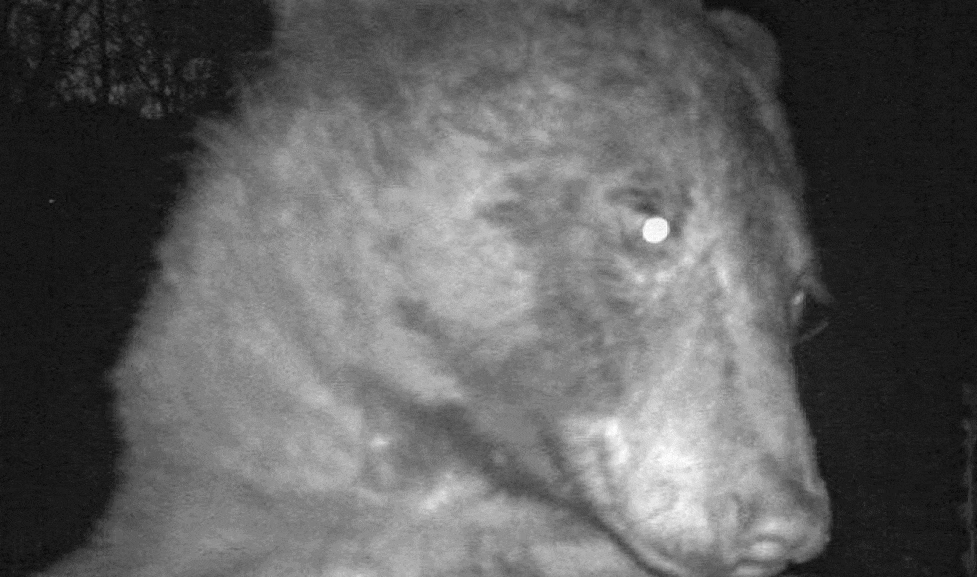Ecology
These Surfers Want to Restore Temperate Rainforests to Ireland
In the rainy mountains along the country’s west coast, a movement has begun to bring back an ecosystem that has been gone for centuries
Pollination From Honeybees Could Make Plants Less Fit to Survive and Reproduce
Plants visited by honeybees rather than native bees may become more inbred, a new study suggests
See the New Tallest Tree in Asia, a 335-Foot Cypress
Easily taller than the Statue of Liberty, the behemoth is likely the second-tallest known tree in the world
Why Have Alaskans Been Photographing This Volkswagen Beetle-Sized Boulder for 33 Years?
A scientist began taking shots after the Exxon Valdez oil spill, and volunteers have since taken over
How the U.S. Almost Became a Nation of Hippo Ranchers
In 1910, a failed House bill sought to increase the availability of low-cost meat by importing hippopotamuses that would be killed to make "lake cow bacon"
On This Disputed River, Progress May Mean a Return to the Past
Winding through British Columbia and Washington, the Skagit has a history that reflects competing conceptions of advancement
The Illuminating Science Behind Fireflies
A dedicated ornithologist with a passion for lightning bugs scours bogs and beaches to discover previously unknown species
Why Male California Sea Lions Are Getting Bigger
The “raccoons of the sea” have varied diets, allowing them to grow large to compete for mates
As Glaciers Retreat, New Streams Offer Homes for Salmon
After the waterways form, insects move in, alders and willows spring up, and spawning fish arrive in thousands
This Black Bear Took Hundreds of ‘Selfies’ on a Wildlife Camera
Of the 580 images captured by the camera in November, about 400 were of the bear
Smithsonian Scholars Pick Their Favorite Books of 2022
This wide-ranging list offers context for our rapidly changing world
Getting Up Close to the Bears of Alaska's Lake Clark National Park
The high density of brown bears in the protected area makes it an ideal spot for viewing and research
How the Bears at Alaska's Katmai National Park Became Celebrities
Park officials had no idea that the installation of live nature cameras at Brooks River ten years ago would lead to the wildly successful Fat Bear Week
Amphibian Plague Led to Malaria Surge in Humans
A new study marks the first time the frog pandemic has been linked to human health
An Estimated 20 Quadrillion Ants Live on Earth
The weight of the world’s ants exceeds that of all wild birds and mammals combined
What Is the Financial Value of an Old-Growth Tree?
In setting fines for timber poaching, experts are looking at different ways to calculate the worth of trees
How Animals Survive in a Savanna Full of Predators
Ecologists have documented a hierarchy of fear in the South African grassland, and the king of beasts is at the top
Cougars Are Killing Feral Donkeys, and That’s Good for Wetlands
Mountain lions play an important role in the Death Valley ecosystem by preying on the introduced species
The Done-Up Bird Gets the Worm
Starling chicks apply their preening oil as a lipstick to get more food from their parents
U.S. Will Plant One Billion Trees to Combat Climate Change
The Forest Service plans to tackle a reforestation backlog of 4.1 million acres
Page 3 of 29
:focal(800x602:801x603)/https://tf-cmsv2-smithsonianmag-media.s3.amazonaws.com/filer_public/83/c5/83c5f2a9-b5b5-4f0e-bf19-d36f14e60fd0/header-ireland-reforestation_web.jpg)
:focal(1057x715:1058x716)/https://tf-cmsv2-smithsonianmag-media.s3.amazonaws.com/filer_public/8b/ac/8bac077b-ca38-4268-a48e-9bf74c501314/gettyimages-146673864.jpg)
:focal(2432x1830:2433x1831)/https://tf-cmsv2-smithsonianmag-media.s3.amazonaws.com/filer_public/f7/1e/f71efbab-555b-4ad0-82c1-d5c810ed6959/u6475a70ff1a2c.png)
:focal(800x602:801x603)/https://tf-cmsv2-smithsonianmag-media.s3.amazonaws.com/filer_public/13/5f/135f34f8-6729-4833-a9a0-96af7ea1bdf5/header-uncropped_web.jpg)
:focal(700x407:701x408)/https://tf-cmsv2-smithsonianmag-media.s3.amazonaws.com/filer_public/3d/2a/3d2a1502-c0dd-4f22-a5e6-f256ce8df7af/hippo.jpg)
:focal(2144x1429:2145x1430)/https://tf-cmsv2-smithsonianmag-media.s3.amazonaws.com/filer_public/23/f4/23f418b6-bd1a-4294-87dc-bd734c66935c/gettyimages-124479331.jpg)
:focal(1800x1354:1801x1355)/https://tf-cmsv2-smithsonianmag-media.s3.amazonaws.com/filer_public/3c/22/3c22dad8-e58e-4c72-96c3-30d06c6c086c/opener_dsc4153_hi_res.jpg)
:focal(1024x770:1025x771)/https://tf-cmsv2-smithsonianmag-media.s3.amazonaws.com/filer_public/91/a5/91a5de09-f063-4650-ae79-cba021791908/5077878877_e896a5c787_k.jpg)
:focal(800x602:801x603)/https://tf-cmsv2-smithsonianmag-media.s3.amazonaws.com/filer_public/e8/5d/e85d1fff-37c9-4585-88da-b5a831308ef5/main_img_1748-cc_web.jpg)

:focal(800x602:801x603)/https://tf-cmsv2-smithsonianmag-media.s3.amazonaws.com/filer_public/b7/bd/b7bdaee0-a3ef-4368-9d4f-f6fc81fe13e0/curatorspicks-booklist-v3.jpg)
:focal(2341x1572:2342x1573)/https://tf-cmsv2-smithsonianmag-media.s3.amazonaws.com/filer_public/2a/43/2a4379d4-fd6a-4d51-9b43-a8a590c6518a/court_whelan_08a1977.jpg)
:focal(1024x683:1025x684)/https://tf-cmsv2-smithsonianmag-media.s3.amazonaws.com/filer_public/cb/40/cb40dd93-58f4-4030-80a9-5ab52b802b8e/52403100975_d6e3cfe5a3_k.jpg)
:focal(1360x855:1361x856)/https://tf-cmsv2-smithsonianmag-media.s3.amazonaws.com/filer_public/1b/ba/1bbaeadf-a228-4590-a7b7-18f8b4ee8f16/atelopus_zeteki_panamanian_golden_frog_c_brian_gratwicke_wikimedia_commons.jpg)
:focal(1632x925:1633x926)/https://tf-cmsv2-smithsonianmag-media.s3.amazonaws.com/filer_public/76/4e/764e96d9-e1b2-47a7-8b3b-6363d2ad75ff/gettyimages-556716783.jpg)
:focal(2500x1690:2501x1691)/https://tf-cmsv2-smithsonianmag-media.s3.amazonaws.com/filer_public/1c/6b/1c6b9d58-e366-4067-96d6-31cc2105f094/gettyimages-452836118.jpg)
:focal(800x602:801x603)/https://tf-cmsv2-smithsonianmag-media.s3.amazonaws.com/filer_public/bf/40/bf40a497-c340-4454-bb65-7d7414a94344/lions_resized.jpg)
:focal(800x602:801x603)/https://tf-cmsv2-smithsonianmag-media.s3.amazonaws.com/filer_public/1f/e7/1fe7633a-4a18-4d9d-a705-b2cd7fb23a5a/alfuso_9_resized.jpg)
:focal(800x602:801x603)/https://tf-cmsv2-smithsonianmag-media.s3.amazonaws.com/filer_public/46/13/4613c11d-cbbe-4b0c-a83b-0d130e8ec928/starling1.jpg)
:focal(960x544:961x545)/https://tf-cmsv2-smithsonianmag-media.s3.amazonaws.com/filer_public/d3/b9/d3b924af-c766-4622-b089-8978cca0319b/trees-3294681_1920.jpg)